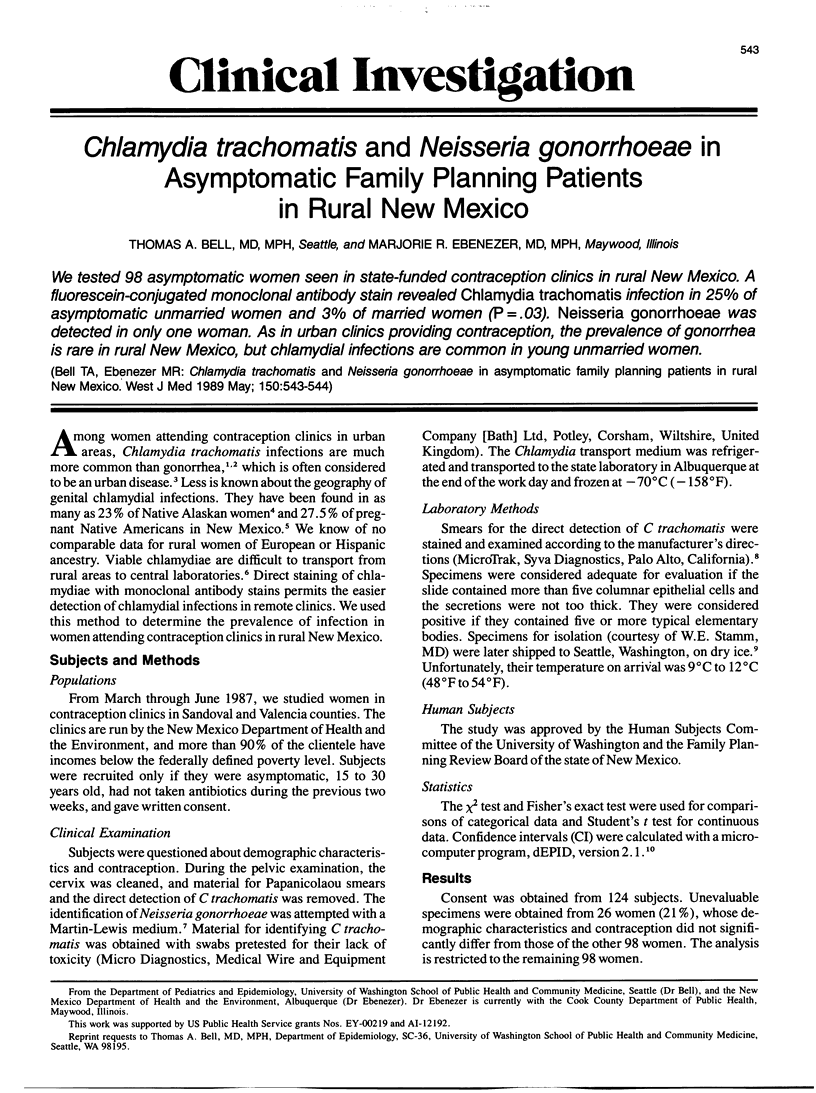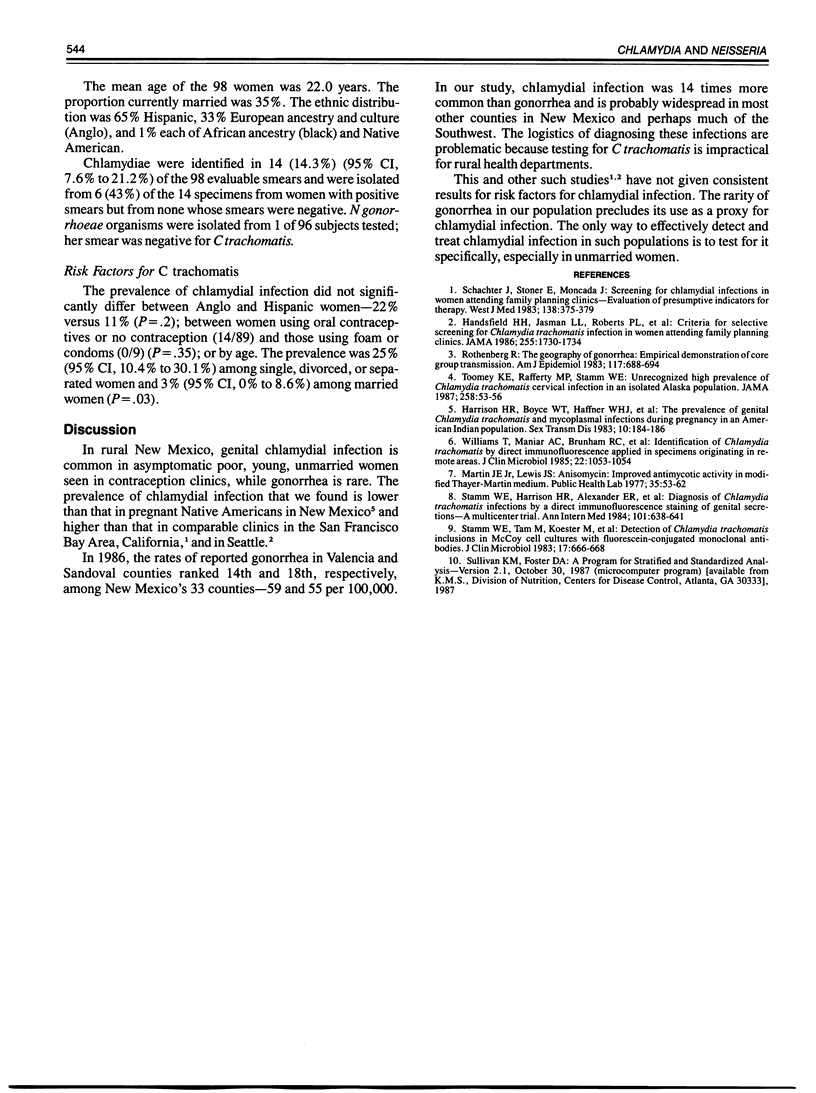Abstract
We tested 98 asymptomatic women seen in state-funded contraception clinics in rural New Mexico. A fluorescein-conjugated monoclonal antibody stain revealed Chlamydia trachomatis infection in 25% of asymptomatic unmarried women and 3% of married women (P = .03). Neisseria gonorrhoeae was detected in only one woman. As in urban clinics providing contraception, the prevalence of gonorrhea is rare in rural New Mexico, but chlamydial infections are common in young unmarried women.
Full text
PDF

Selected References
These references are in PubMed. This may not be the complete list of references from this article.
- Handsfield H. H., Jasman L. L., Roberts P. L., Hanson V. W., Kothenbeutel R. L., Stamm W. E. Criteria for selective screening for Chlamydia trachomatis infection in women attending family planning clinics. JAMA. 1986 Apr 4;255(13):1730–1734. [PubMed] [Google Scholar]
- Harrison H. R., Boyce W. T., Haffner W. H., Crowley B., Weinstein L., Lewis M., Alexander E. R. The prevalence of genital Chlamydia trachomatis and mycoplasmal infections during pregnancy in an American Indian population. Sex Transm Dis. 1983 Oct-Dec;10(4):184–186. doi: 10.1097/00007435-198311000-00004. [DOI] [PubMed] [Google Scholar]
- Rothenberg R. B. The geography of gonorrhea. Empirical demonstration of core group transmission. Am J Epidemiol. 1983 Jun;117(6):688–694. doi: 10.1093/oxfordjournals.aje.a113602. [DOI] [PubMed] [Google Scholar]
- Schachter J., Stoner E., Moncada J. Screening for chlamydial infections in women attending family planning clinics. West J Med. 1983 Mar;138(3):375–379. [PMC free article] [PubMed] [Google Scholar]
- Stamm W. E., Harrison H. R., Alexander E. R., Cles L. D., Spence M. R., Quinn T. C. Diagnosis of Chlamydia trachomatis infections by direct immunofluorescence staining of genital secretions. A multicenter trial. Ann Intern Med. 1984 Nov;101(5):638–641. doi: 10.7326/0003-4819-101-5-638. [DOI] [PubMed] [Google Scholar]
- Stamm W. E., Tam M., Koester M., Cles L. Detection of Chlamydia trachomatis inclusions in Mccoy cell cultures with fluorescein-conjugated monoclonal antibodies. J Clin Microbiol. 1983 Apr;17(4):666–668. doi: 10.1128/jcm.17.4.666-668.1983. [DOI] [PMC free article] [PubMed] [Google Scholar]
- Toomey K. E., Rafferty M. P., Stamm W. E. Unrecognized high prevalence of Chlamydia trachomatis cervical infection in an isolated Alaskan Eskimo population. JAMA. 1987 Jul 3;258(1):53–56. [PubMed] [Google Scholar]
- Williams T., Maniar A. C., Brunham R. C., Hammond G. W. Identification of Chlamydia trachomatis by direct immunofluorescence applied in specimens originating in remote areas. J Clin Microbiol. 1985 Dec;22(6):1053–1054. doi: 10.1128/jcm.22.6.1053-1054.1985. [DOI] [PMC free article] [PubMed] [Google Scholar]


